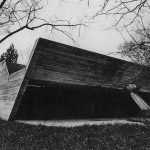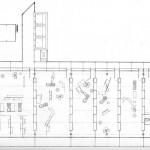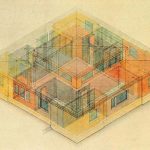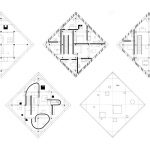Published in a supplement of Architectural Design in 1971, this research project by architect Cedric Price is an investigation on “the good life”. What could lead to a better life in a domestic environment? According to Price, housing should foster the desire for better living rather than include limitations or restrictions. Since the definition of “good life” is at very least loose if not completely dependant on subjective judgement, a fundamental role in a domestic environment is played by the capacity of architecture to take into account the changeability of the inhabitants’ needs and incorporate the possibility of change over the course of its lifetime into its own physical configuration.
Costs control, environmental impact and mobility are other major issues shaping the house: to allow for a rapid response on mobility, and influence the real-estate value of the plot, the house and the land in which it is built are as separated as possible . Reports on the possibility of rapid assembly and dismantling of the construction are incorporated into the design in order to radically reduce environmental damage.
The Steel House, (1967), is a concrete project for a house whose main design criterion is a space offering the maximum variability of uses. Its plans features a shared area able to vary over 24-hour cycles, internal and external access routes, capacity for subdivision into two homes and increasing fragmentation of self-contained units.
Bibliography:
Gustau Gili Galfetti: Pisos Piloto (Células Domesticas experimentales) – Model Apartments, (Experimental domestic cells) GG 1997
Jessica Hartany, Angelina Le: NextGen Housing Chapter Study: On flexible spaces and modularity






Leave a Reply